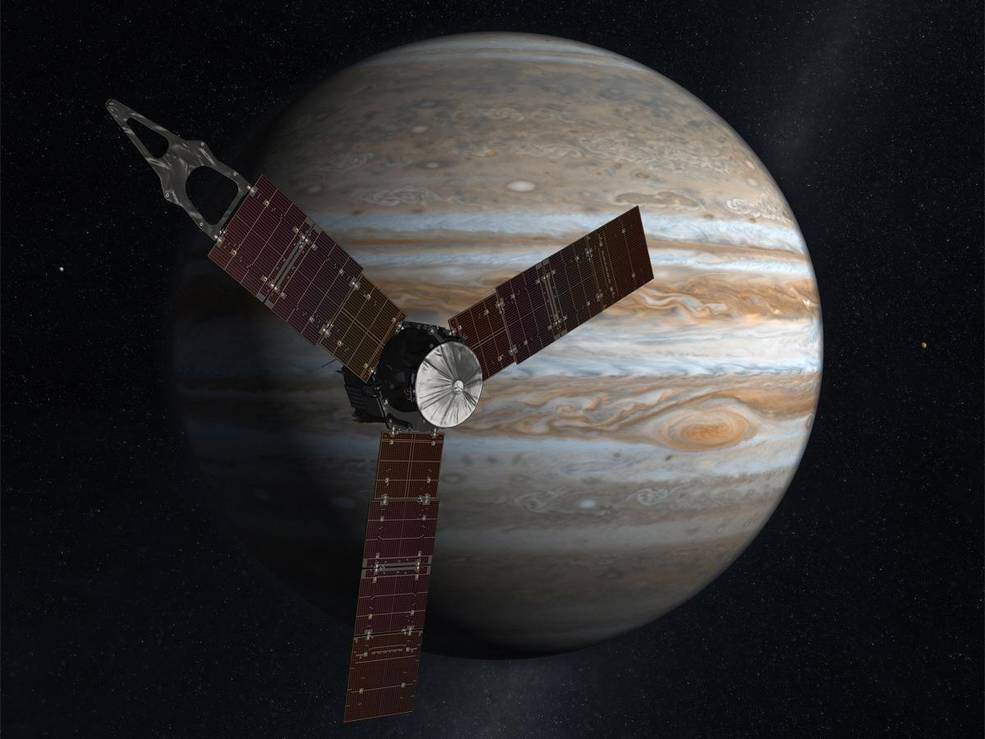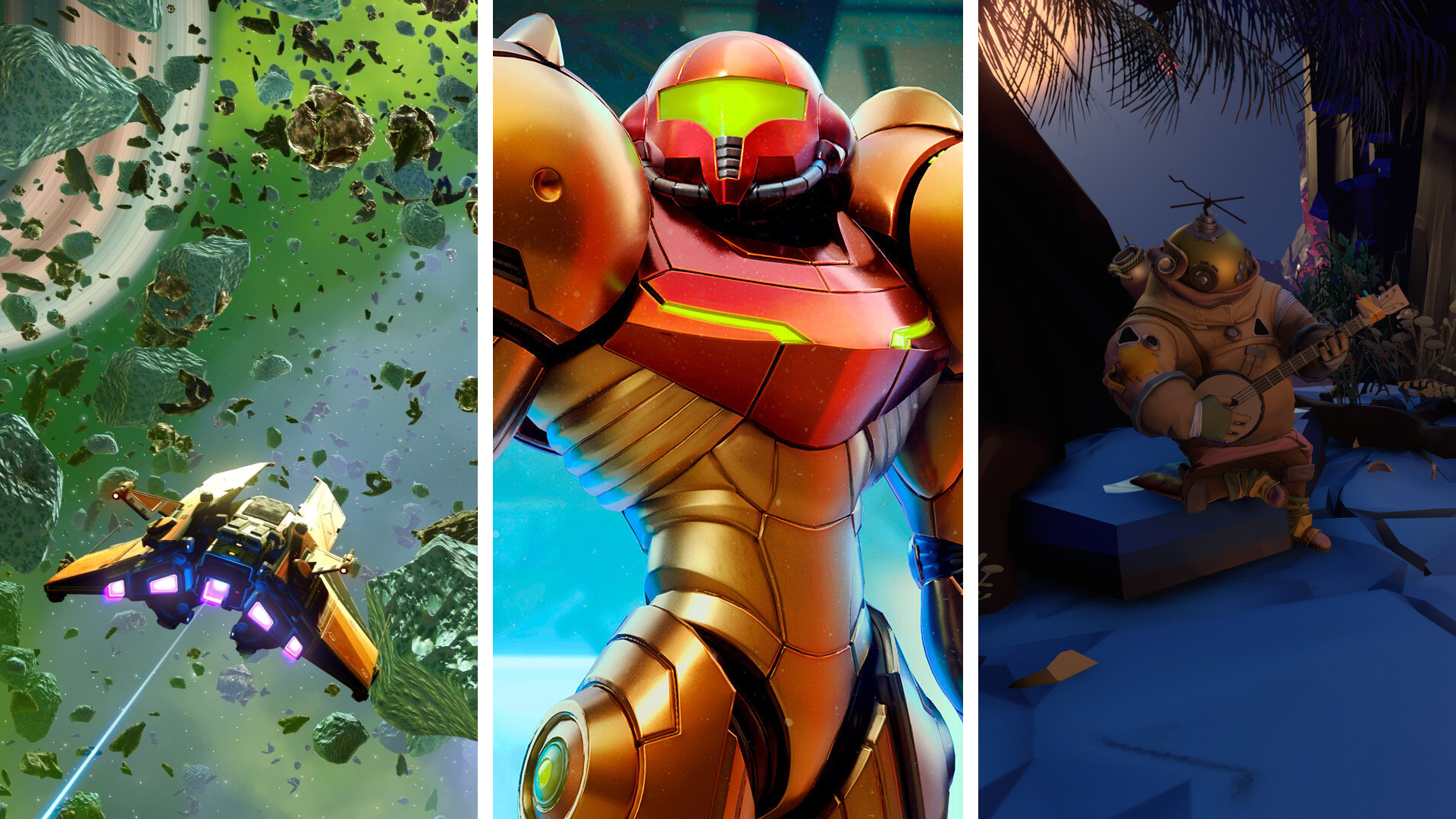Closing in on Jupiter: 7 Fun Facts About Juno's Mission

NASA's Juno spacecraft will reach Jupiter Monday (July 4) after a five-year journey through deep space. The probe will study the structure and evolution of the solar system's largest planet from orbit, taking measurements for more than a year despite Jupiter's intense radiation environment.
"Jupiter is the planet on steroids in our solar system; everything about it is extreme," Juno principal investigator Scott Bolton, of the Southwest Research Institute in San Antonio, told Space.com.
The mission has several major science goals. One is to learn how much water is inside Jupiter, which should yield insights about the amounts of water that were present in the solar system's early days. [Juno's Jupiter Arrival: Complete Coverage]
Juno scientists also hope to map out Jupiter's interior, determining (among other things) whether or not the planet has a rocky core. Such information should help researchers learn more about the planet-formation process in general, shedding light on the nature of worlds throughout the Milky Way galaxy, mission team members have said.
"It's a big challenge," Bolton said, "but we have to take those challenges if we're going to explore and learn about ourselves, and how we fit into nature."
Here are seven things to know about Juno's mission:
1. Jupiter's radiation will take a toll on Juno
Get the Space.com Newsletter
Breaking space news, the latest updates on rocket launches, skywatching events and more!
Juno is scheduled to orbit Jupiter for about 20 months. The spacecraft likely can't keep going much longer than that, because of the intense radiation environment at Jupiter.
For example, the planet's magnetic field is about 20,000 times as intense as Earth's, so Juno will have to withstand impacts by many charged particles moving at superfast speeds. [Juno's Jupiter Mission Fraught with Danger (Video)]
That's not to say that NASA isn't doing its best to keep the probe safe. Juno harbors a radiation-shielded electronics vault, the first of its kind. The vault is a cube about the size of an SUV's trunk, made of titanium about 0.3 inches (0.8 centimeters) thick. Inside are some of the most precious parts of Juno — its brain (command and data-handling box), its power and distribution unit, and 20 other key electronics components, according to a NASA press kit. With instruments inside, the vault has a mass of about 500 lbs. (200 kilograms).
2. Juno only has about as much hard-drive space as your laptop
The spacecraft's main computer has about as much memory as a laptop with a solid-state drive. The computer features 256 megabytes of flash memory — to preserve data even in the event of a power interruption — and 128 megabytes of dynamic random-access memory (DRAM). DRAM is useful in situations where low cost and high capacity are required at the same time, NASA officials have said.
Why not give Juno more memory? The spacecraft uses the BAE Systems RAD750 single-board computer, which is designed for high-radiation environments. This computer has been used many times in space, including for NASA missions such as the Van Allen probes (which fly through Earth's radiation belts), the Mars Reconnaissance Orbiter and the Mars rover Curiosity.
3. Juno is the most distant solar-powered spacecraft ever
Juno has gone farther into deep space than any other solar-powered probe. The spacecraft set the record in January, when it was about 493 million miles (793 million kilometers) from the sun, surpassing the distance of the European Space Agency's Rosetta spacecraft during the latter's journey to Comet 67P/Churyumov-Gerasimenko.
Most spacecraft that venture so far from the sun need to use nuclear power to keep going. But Juno is able to generate enough power, thanks to its three huge solar panels, each of which is 30 feet (9 meters) long. These arrays will generate about 500 watts of power at Jupiter, mission team members have said.
4. Juno will spin while doing science
Juno spins to stay stable, a strategy that borrows from the design of NASA's old Pioneer probes. Two Pioneer spacecraft (Pioneers 10 and 11) sailed by Jupiter in 1973 and are still cruising out into the solar system, albeit silently; NASA lost contact with Pioneer 10 in 2003 and Pioneer 11 in 1995.
Juno's spin rate has varied quite a bit during its journey so far. When its main engine fires, Juno spins up to 5 revolutions per minute (RPM). During cruise periods, this rate dips to 1 RPM.
When doing science operations, however, Juno will spin at 2 RPM. At this rate, Juno's field of view will move across Jupiter 400 times during one journey from pole to pole. The spacecraft will not use a "scan platform" to point its instruments because of the spinning design, and also because the instruments don't need to point in different directions at the same time.
5. Juno will take nearly three months to reach its final orbit
After Juno inserts itself into Jupiter's orbit, the probe will spend 107 days in what is called a "capture orbit." Scientists chose to take this long way around instead of inserting Juno directly into its final, 14-day orbit, because the direct route would have required a lot of fuel.
The capture orbit not only saves fuel, but it also gives mission scientists a chance to check out their instruments and begin science observations from afar. According to NASA, the team will begin using all the instruments to collect data about 50 hours after Juno is inserted into Jupiter's orbit.
6. Juno has an unusual final orbit
The best way to map any world is to move a spacecraft repeatedly over the poles. Then the entire world can spin beneath the probe, allowing it to map every part of the surface. But at Jupiter, there's a rub — high levels of potentially damaging radiation close to the planet.
As a way to minimize its radiation exposure, Juno will fly in a very elongated orbit. At the south end of its orbit, Juno will be at its closest approach to Jupiter: just 3,100 miles (5,000 kilometers). But as it leaves the south polar region, Juno will fly way out beyond the moon Callisto's orbit, which lies about 1.2 million miles (1.9 million km) from Jupiter.
This highly elliptical orbit will also keep Juno's solar panels in sunlight, NASA officials have said.
7. Juno will die a dramatic death
In the past few decades, scientists have learned that life is incredibly hardy and persistent. Earth microbes thrive in boiling-hot, deep-sea vents at the bottom of the ocean, and some can even survive exposure to the harsh environment of space.
It's therefore possible that some Earth organisms may still be alive aboard Juno. Scientists and NASA officials don't want to take the chance that such microbes could contaminate Jupiter's ocean-harboring moon Europa — one of the solar system's best bets to host alien life — or other Jovian satellites such as Ganymede or Callisto.
So at the end of its mission, Juno will perform a 5.5-day maneuver that will crash it into Jupiter's atmosphere intentionally. The mission is scheduled to end in February 2018, but it may be extended slightly.
Follow Elizabeth Howell @howellspace, or Space.com @Spacedotcom. We're also on Facebook and Google+. Original article on Space.com.
Join our Space Forums to keep talking space on the latest missions, night sky and more! And if you have a news tip, correction or comment, let us know at: community@space.com.

Elizabeth Howell (she/her), Ph.D., was a staff writer in the spaceflight channel between 2022 and 2024 specializing in Canadian space news. She was contributing writer for Space.com for 10 years from 2012 to 2024. Elizabeth's reporting includes multiple exclusives with the White House, leading world coverage about a lost-and-found space tomato on the International Space Station, witnessing five human spaceflight launches on two continents, flying parabolic, working inside a spacesuit, and participating in a simulated Mars mission. Her latest book, "Why Am I Taller?" (ECW Press, 2022) is co-written with astronaut Dave Williams.
